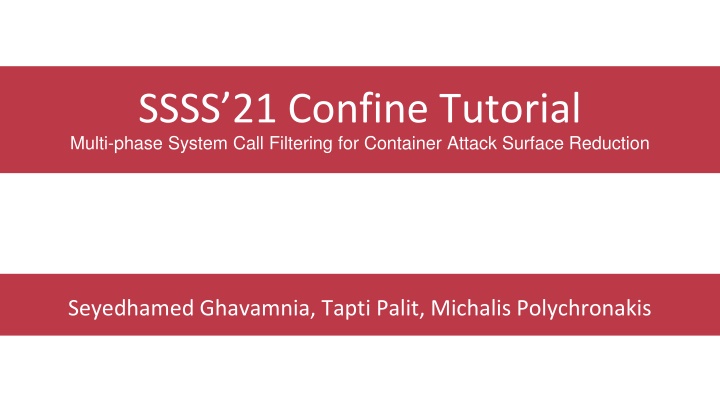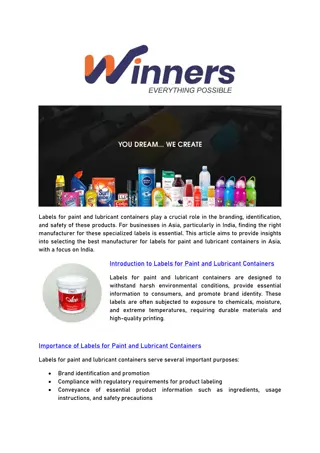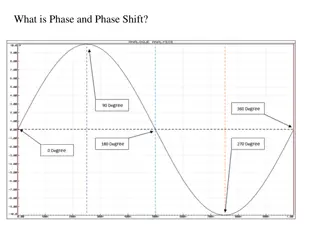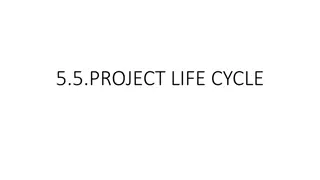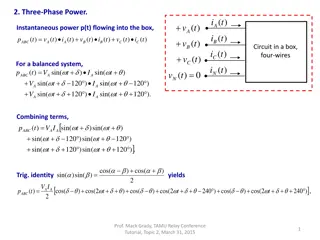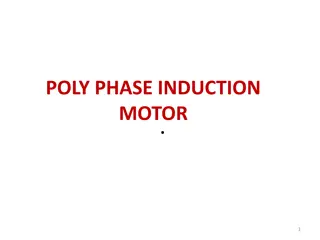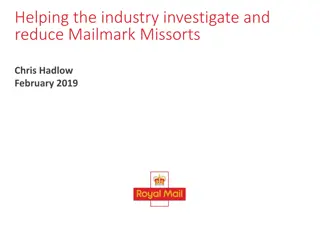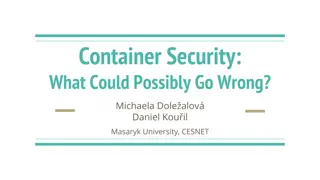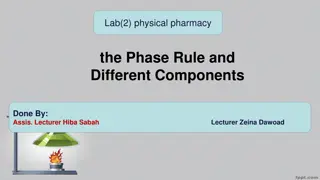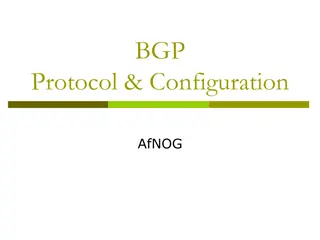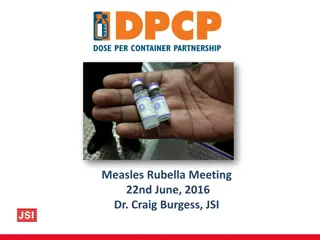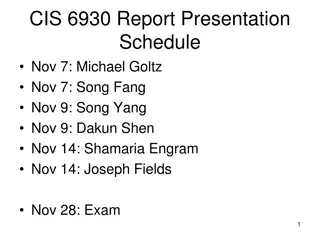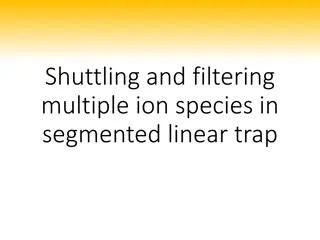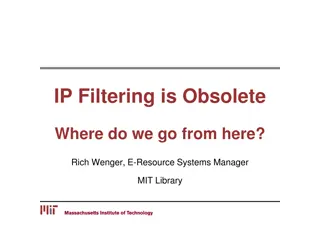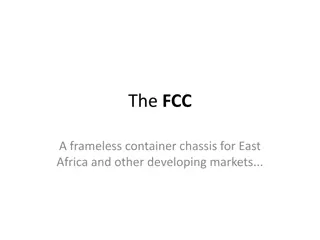Multi-phase System Call Filtering for Container Security Enhancement
This tutorial discusses the importance of multi-phase system call filtering for reducing the attack surface of containers. It covers the benefits of containerization, OS virtualization, and the differences between OS and hardware virtualization. The tutorial emphasizes the need to reduce the kernel attack surface for improved security by limiting system calls. Various strategies and techniques for enhancing container security are explored, focusing on isolating containers and restricting access to kernel resources. Overall, the content provides insights into mitigating security risks in container environments.
Uploaded on Sep 20, 2024 | 1 Views
Download Presentation

Please find below an Image/Link to download the presentation.
The content on the website is provided AS IS for your information and personal use only. It may not be sold, licensed, or shared on other websites without obtaining consent from the author.If you encounter any issues during the download, it is possible that the publisher has removed the file from their server.
You are allowed to download the files provided on this website for personal or commercial use, subject to the condition that they are used lawfully. All files are the property of their respective owners.
The content on the website is provided AS IS for your information and personal use only. It may not be sold, licensed, or shared on other websites without obtaining consent from the author.
E N D
Presentation Transcript
SSSS21 Confine Tutorial Multi-phase System Call Filtering for Container Attack Surface Reduction Seyedhamed Ghavamnia, Tapti Palit, Michalis Polychronakis
Containers Containers package software code and all its dependencies Simplify the task of launching instances of the same application Simplify continuous integration and continuous delivery (CI/CD) pipelines Confine: Multi-phase System Call Filtering for Container Attack Surface Reduction 2
OS Virtualization Containers work based on OS virtualization (vs. HW virtualization) Interest in containers has increased Higher resource utilization Easier to launch and maintain Faster startup time Better for software packaging Confine: Multi-phase System Call Filtering for Container Attack Surface Reduction 3
OS vs. HW Virtualization OS Virtualization HW Virtualization VM2 App VM1 App App App App Seccomp Guest OS Guest OS Isolation Namespaces: Wraps a global system resource in an abstraction Cgroups: Limits and accounts for the resource usage of processes Capabilities: Divide privileges traditionally associated with superuser into distinct units Linux Kernel Hypervisor Isolation Hardware Hardware Confine: Multi-phase System Call Filtering for Container Attack Surface Reduction 4
OS vs. HW Virtualization Container isolation enforced by kernel Exploit kernel vulnerability = Break isolation Possible strategies: Use better isolation techniques (hardware, hypervisor, VMM) Reduces resource utilization Reduce kernel attack surface Limit attacker capabilities required to break out of a container Confine: Multi-phase System Call Filtering for Container Attack Surface Reduction 5
Reduce Kernel Attack Surface Linux kernel (v5.6) provides 349 system calls Docker prohibits access to 44 system calls by default Seccomp BPF filtering Restrict access to system calls Reduce the accessible parts of the kernel Can we filter more system calls by analyzing the container? Confine: Multi-phase System Call Filtering for Container Attack Surface Reduction 6
Confine Identifies system calls required through static and dynamic analysis Generates a Seccomp profile for the whole container New features (since SSSS 20) Consider a container s different phases of execution Generate a more restrictive filter based on the long-running application (app-specific) Confine: Multi-phase System Call Filtering for Container Attack Surface Reduction 7
Agenda Overview How to work with Confine Demo: Harden a sample Docker image Escape container isolation by exploiting kernel vulnerability Mitigate exploit by applying Seccomp profile created by Confine Hands-on exercises Confine: Multi-phase System Call Filtering for Container Attack Surface Reduction 8
Confine Overview Static Analysis Launch Monitor Analyze Integrate List of Binaries & Libraries Required Functions Docker Image Container Libc -> Syscall Dynamic Analysis Required System Calls Extract Direct Syscalls Confine: Multi-phase System Call Filtering for Container Attack Surface Reduction 9
Container-wide vs. App-specific Filters List of Binaries & Libraries Required System Calls shm_get getaffin write socket getdents execve find rm touch mkdir nginx Confine: Multi-phase System Call Filtering for Container Attack Surface Reduction 10
Container-wide vs. App-specific Filters List of Binaries & Libraries Required System Calls shm_get getaffin write socket getdents execve find rm touch mkdir nginx Confine: Multi-phase System Call Filtering for Container Attack Surface Reduction 11
Container-wide vs. App-specific Filters Confine: Multi-phase System Call Filtering for Container Attack Surface Reduction 12
Confine Command Execution Static Analysis Launch Monitor Analyze Integrate List of Binaries & Libraries Required Functions Docker Image Container Libc -> Syscall Dynamic Analysis Required System Calls Extract Direct Syscalls How to run? python3.8 confine.py -l libc-callgraphs/glibc.callgraph -m libc-callgraphs/musllibc.callgraph -i images.json -o output/ -p default.seccomp.json -r results/ -g go.syscalls/ --finegrain -- othercfgfolder other-callgraphs.wsyscalls/ Confine: Multi-phase System Call Filtering for Container Attack Surface Reduction 13
Confine Input python3.8 confine.py -l libc-callgraphs/glibc.callgraph -m libc-callgraphs/musllibc.callgraph -i images.json -o output/ -p default.seccomp.json -r results/ -g go.syscalls/ --finegrain -- othercfgfolder other-callgraphs.wsyscalls/ {"nginx": { "enable": "false", "image-name": "nginx", "image-url": "nginx", "options": "", "dependencies": {}, "binaries": ["nginx"], "docker-cmd": ["nginx","-g","daemon off;"], "entrypoint": "docker-entrypoint.sh", "docker-path": "/home/confine/nginx" } } Confine: Multi-phase System Call Filtering for Container Attack Surface Reduction 14
Docker Hub Example Confine: Multi-phase System Call Filtering for Container Attack Surface Reduction 15
Confine Input python3.8 confine.py -l libc-callgraphs/glibc.callgraph -m libc-callgraphs/musllibc.callgraph -i images.json -o output/ -p default.seccomp.json -r results/ -g go.syscalls/ --finegrain -- othercfgfolder other-callgraphs.wsyscalls/ {"nginx": { "enable": "false", "image-name": "nginx", "image-url": "nginx", "options": "", "dependencies": {}, "binaries": ["nginx"], "docker-cmd": ["nginx","-g","daemon off;"], "entrypoint": "docker-entrypoint.sh", "docker-path": "/home/confine/nginx" } } Confine: Multi-phase System Call Filtering for Container Attack Surface Reduction 16
Confine Input python3.8 confine.py -l libc-callgraphs/glibc.callgraph -m libc-callgraphs/musllibc.callgraph -i images.json -o output/ -p default.seccomp.json -r results/ -g go.syscalls/ --finegrain -- othercfgfolder other-callgraphs.wsyscalls/ Libc -> Syscall Mapping Glibc: GCC RTL + egypt tool Musl-libc: LLVM pass Will not be performed today: it is provided in the repository read SYS_read open SYS_open SYS_setreuid setreuid SYS_getrlimit Confine: Multi-phase System Call Filtering for Container Attack Surface Reduction 17
Agenda Overview How to work with Confine Demo: Harden a sample Docker image Escape container isolation by exploiting a kernel vulnerability Mitigate exploit by applying Seccomp profile created by Confine Hands-on exercises Confine: Multi-phase System Call Filtering for Container Attack Surface Reduction 18
Demo Harden a Docker image Generate post-initialization filter View generated Seccomp profile (both container-wide and app-specific) View list of extracted binaries and libraries View list of identified functions Security benefit: User level shellcode Kernel vulnerability exploit Confine: Multi-phase System Call Filtering for Container Attack Surface Reduction 19
User level shellcode Attacker wants to gain shell access in container Exploits vulnerability in application running in container Executes shellcode to get root shell in container Confine filters system calls invoked through shellcode Confine: Multi-phase System Call Filtering for Container Attack Surface Reduction 20
Kernel Exploit - Threat Model OS Virtualization App App App Seccomp Isolation Namespaces: Wraps a global system resource in an abstraction Cgroups: Limits and accounts for the resource usage of processes Capabilities: Divide privileges traditionally associated with superuser into distinct units Linux Kernel Hardware Confine: Multi-phase System Call Filtering for Container Attack Surface Reduction 21
Kernel Exploit - Threat Model Attacker has root access to one container Docker container processes are limited to 14 capabilities (out of >32) SYS_ADMIN is not enabled Required for installing module, reading kernel logs Goal: Break out of container (perform operations not permitted in container) Read kernel logs Install kernel modules Use vulnerability to add SYS_ADMIN capability to process Confine: Multi-phase System Call Filtering for Container Attack Surface Reduction 22
Kernel Exploit CVE: 2017-5123: ability to write non-controlled user data to arbitrary kernel memory Use vulnerability to overwrite capability flag of current process Affected system call: waitid User provides address for siginfo struct Kernel fills that address with information from the process Requires a check (missing in vulnerable version) on the provided address Confine: Multi-phase System Call Filtering for Container Attack Surface Reduction 23
SYSCALL_DEFINE5(waitid, int, which, pid_t, upid, struct siginfo __user *, infop, int, options, struct rusage __user *, ru){ struct waitid_info info = {.status = 0}; . user_access_begin(); unsafe_put_user(signo, &infop->si_signo, Efault); unsafe_put_user(0, &infop->si_errno, Efault); unsafe_put_user((short)info.cause, &infop->si_code, Efault); unsafe_put_user(info.pid, &infop->si_pid, Efault); unsafe_put_user(info.uid, &infop->si_uid, Efault); unsafe_put_user(info.status, &infop->si_status, Efault); user_access_end(); return err; } typedef struct siginfo { int si_signo; int si_errno; int si_code; int padding; pid_t _pid; uid_t _uid; int _status; } CAP_SYS_PTRACE struct cred { CAP_SYS_ADMIN . kernel_cap_t cap_inheritable; kernel_cap_t cap_permitted; kernel_cap_t cap_effective; kernel_cap_t . CAP_CHOWN cap_effective[0]: 1 0 ... 1 0 0 0 1 0 0 1 cap_bset; 0 1 ... 19 20 21 22 23 .. 30 31 } typedef struct kernel_cap_struct { __u32 cap[2]; } kernel_cap_t; 24
Exploit Steps Launch a container and run bash Create a user with the highest possible UID (dummy) Add user to sudoers Switch to created user (dummy) Run exploit which overwrites capabilities with UID Confine: Multi-phase System Call Filtering for Container Attack Surface Reduction 25
Agenda Overview How to work with Confine Demo: Harden a sample Docker image Escape container isolation by exploiting kernel vulnerability Mitigate exploit by applying Seccomp profile created by Confine Hands-on exercises Confine: Multi-phase System Call Filtering for Container Attack Surface Reduction 26
Hands-on Exercise 1 Goal: Harden the Nginx Docker image image-name: nginx image-url: nginx User guide: https://www3.cs.stonybrook.edu/~sghavamnia/confine/userguide.html Step-by-Step Guide: https://www3.cs.stonybrook.edu/~sghavamnia/confine/stepbystep21.html Confine: Multi-phase System Call Filtering for Container Attack Surface Reduction 27
Hands-on Exercise 2 Goal: Test the functionality of the hardened container Launch the container with the hardened profile Hint: Use the commands in the user guide Try fetching the default index file with: wget http://172.17.0.2 You might need to extract the IP first Try connecting to the container and getting a shell Did it work? (How about trying /bin/sh) Run some commands. Is there anything that doesn t work? (apt-get update) Confine: Multi-phase System Call Filtering for Container Attack Surface Reduction 28
Hands-on Exercise 3 Goal: Interpret results and identify security benefit How many system calls can be filtered? Map filtered system calls to CVEs How? Refer to user guide (part 3) How many CVEs are mitigated? Was waitid() filtered? Do the results show CVE-2017-5123 being mitigated? Confine: Multi-phase System Call Filtering for Container Attack Surface Reduction 29
Thank you! {sghavamnia, tpalit, mikepo}@cs.stonybrook.edu Confine: Multi-phase System Call Filtering for Container Attack Surface Reduction https://github.com/shamedgh/confine
Docker Default Capabilities SETUID SETFCAP SETPCAP NET_BIND_SERVICE SYS_CHROOT KILL AUDIT_WRITE CHOWN DAC_OVERRIDE FSETID FOWNER MKNOD NET_RAW SETGID Confine: Multi-phase System Call Filtering for Container Attack Surface Reduction 31
Glibc Callgraph Glibc->Syscall Mapping 1.Compile glibc into RTL 2.Generate initial callgraph by running egypt tool on RTL 3.Map functions to system calls through parsing RTL 4.Handle weak aliases 5.Handle strong aliases 6.Handle versioned aliases 7.Handle compatibility symbols Confine: Multi-phase System Call Filtering for Container Attack Surface Reduction 32
